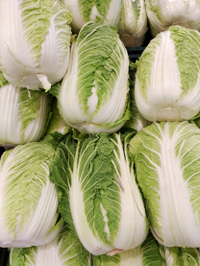
Photo from wikipedia
The effect of temperature on severity of Fusarium wilt of cabbage caused by pathogen Fusarium oxysporum f. sp. conglutinans was assessed. The pathogen was first tested in vitro for growth… Click to show full abstract
The effect of temperature on severity of Fusarium wilt of cabbage caused by pathogen Fusarium oxysporum f. sp. conglutinans was assessed. The pathogen was first tested in vitro for growth under different temperatures of 15, 18, 24, 28 and 37 °C. Based on the results, several temperature variants were selected to test the effect of temperature on the infection of plants grown in substrate. Two susceptible and one resistant variety were chosen for the testing. Cabbage plants were cultivated at temperatures of 16/18 °C, 19/21 °C, 22/24 °C and 26/28 °C. Susceptible varieties showed more severe symptoms and greater plant die-off at higher temperatures (22/24 °C and 26/28 °C), compared to lower temperatures (16/18 °C and 19/21 °C). For the resistant variety, the highest incidence of wilt symptoms was observed at 26/28 °C, while the degree of infection was the same as in susceptible plants at lower temperatures. PCR analysis demonstrated that plants grown at lower temperatures with minimum symptoms were also infected with the pathogen. The study suggested losses due to Fusarium wilt could be reduced by cultivating cabbages during colder periods.
Journal Title: European Journal of Plant Pathology
Year Published: 2019
Link to full text (if available)
Share on Social Media: Sign Up to like & get
recommendations!